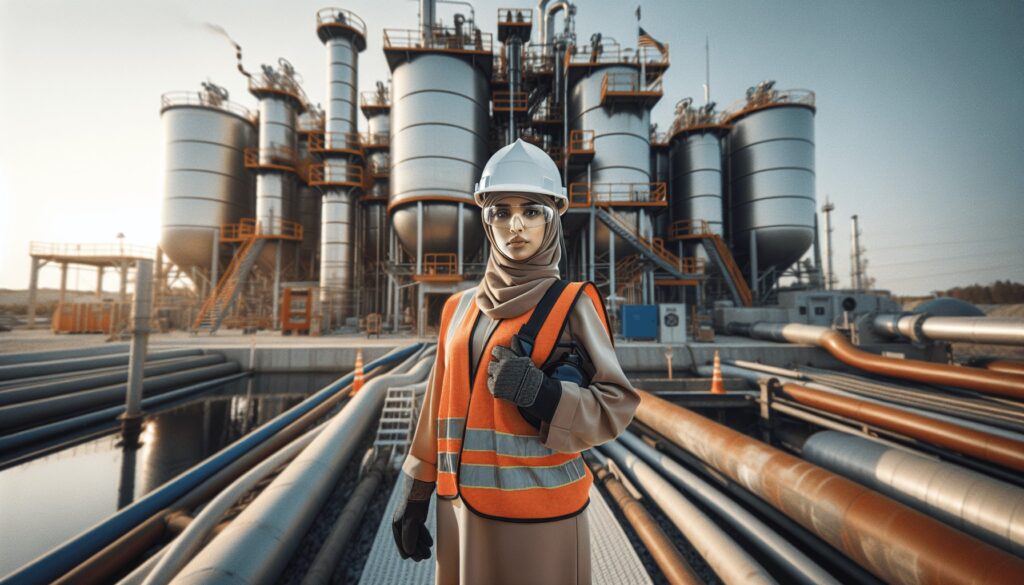Have you ever stopped to think about the unique safety challenges that an activated sludge plant might pose? Your day-to-day role might feel routine, but it’s crucial to remain aware of the potential hazards and prioritize personal safety at all times. Let’s take a closer look at how you can ensure your safety, and the safety of others, in the complex environment of an activated sludge plant.

Understanding Activated Sludge Plants
Before diving into safety protocols, it’s beneficial to understand what an activated sludge plant is and how it functions. These plants are a cornerstone of modern sewage treatment, using a biological process to break down organic matter. By harnessing the power of microorganisms, you can effectively transform waste into cleaner water, which is vital for environmental protection and public health.
Key Components of an Activated Sludge Plant
Understanding the key components of your work environment helps you identify potential safety issues more efficiently. Typical components of such a plant include aeration tanks, clarifiers, and return activated sludge systems. Each of these components plays a pivotal role in the treatment process, and likewise, each carries its own set of safety considerations.
Identifying Common Safety Hazards
Safety at an activated sludge plant can be compromised by numerous factors. By being aware of these risks, you can take proactive steps to prevent accidents and injuries.
Slips, Trips, and Falls
One of the most common causes of injury across all workplaces is slips, trips, and falls. Wet surfaces around treatment tanks, along with uneven pavement or cluttered walkways, can increase your risk of slipping. Maintaining a clear, dry workspace is essential to reduce this danger.
Chemical Exposure
Working in a treatment plant, you’ll often find yourself dealing with various chemicals. Properly handling them is crucial. Improper use or accidental spills can lead to skin irritation, respiratory issues, or more severe health consequences. Always adhere to the recommended guidelines for handling and storing chemicals, making sure to use appropriate personal protective equipment (PPE).
Biological Hazards
While microorganisms facilitate the treatment process, they can also pose health risks. Direct exposure to untreated wastewater might contain pathogens that can lead to infections or illnesses. The use of PPE, including gloves and masks, helps mitigate these risks by creating a barrier between you and potentially harmful organisms.
Equipment Safety and Best Practices
Your work often requires interacting with machinery and equipment, necessitating a strong emphasis on mechanical safety.
Operating Machinery Safely
Understanding the machinery you’re working with is your first line of defense. Ensure you’re familiar with the manufacturer’s guidelines and the operation manual for each piece of equipment. Routine maintenance checks and prompt repairs are crucial in preventing mechanical failures that could result in injury.
Energy Control Procedures
Following lockout/tagout (LOTO) procedures is critical in preventing accidental energy discharge. This ensures that machines are properly shut off and unable to be started up again before the completion of maintenance work. Adhering to these procedures protects you from unexpected electrical, hydraulic, or pneumatic energy releases.
The Importance of Personal Protective Equipment (PPE)
Never underestimate the power of personal protective equipment in safeguarding your health and safety. From hard hats and steel-toed boots to gloves and goggles, each piece of PPE is designed to shield you from a specific set of risks.
Choosing the Right PPE
Selecting appropriate PPE is crucial. Assess the specific risks you encounter in your role to determine which protective gear will be most effective. For instance, if you’re handling chemicals, chemical-resistant gloves and goggles are required to prevent splashes from reaching your skin and eyes.
Maintaining Your PPE
Equally important as selecting the right PPE is ensuring it is well-maintained and fit for purpose. Regular inspections and prompt replacement of damaged or worn-out gear are non-negotiable. It’s about ensuring your protective gear can perform its intended duty effectively at all times.

Developing a Safety-Conscious Culture
A strong safety culture in your workplace can decrease the likelihood of accidents and injuries. Promoting safety is everyone’s responsibility and requires active participation at all levels of the organization.
Safety Training and Drills
To ensure safety is always top of mind, regular training sessions and safety drills are essential. These sessions keep your knowledge fresh and prepare you to respond swiftly in case of an emergency.
Encouraging Open Communication
Fostering an environment where you feel comfortable discussing safety concerns leads to the resolution of issues before they escalate. Encourage open dialogue with your peers and supervisors to address potential hazards promptly.
Emergency Preparedness and Response
Preparation is key when it comes to handling emergencies. By being well-prepared, you can minimize the impact of any incidents that do occur.
Establishing Clear Emergency Protocols
In an activated sludge plant, the potential for emergencies is always present. Having established protocols for various scenarios—from chemical spills to fires—ensures that everyone knows exactly what steps to take in an emergency.
Regular Review and Updates
Technology and best practices change over time. It’s vital to regularly review and update emergency plans to reflect new insights or changes within the plant. This ensures your strategies are always aligned with the most current standards and regulations.
Conclusion
Navigating the diverse safety challenges of an activated sludge plant calls for vigilance, awareness, and preparedness. By understanding the inherent risks and implementing robust safety protocols, you can protect yourself and your coworkers. It’s more than just following rules; it’s about creating an environment where everyone can work safely and confidently every day. Safety is not just a priority but a fundamental part of every aspect of operations. So take it seriously, remain informed, and always wear your protective gear. Remember, a safe workplace is a productive and positive place to be.